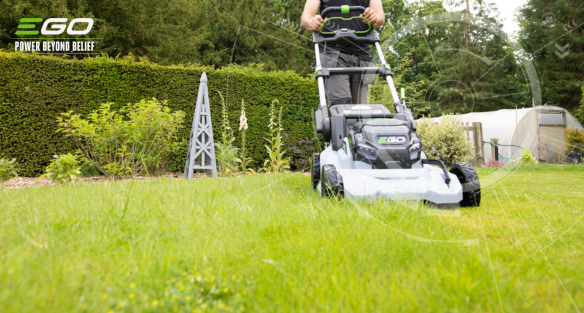Because autumn starts to creep in during September, the changing conditions can dictate how often you should mow your lawn. Declining temperatures may slow down grass growth, but it doesn’t mean you should stop mowing completely.
On the other hand, warm weather can arrive in September, too, and so you’ll change your mowing to suit. Knowing how to mow around the changing seasons can be tricky, so we’ve put together this handy guide.
Tips for mowing in September
Due to the declining temperatures in September, you will need to change your mowing schedule and practices as the month progresses.
At the start of the month, you’ll still need to continue mowing your lawn at least once per week, and maybe even twice a week, depending on the weather you get.
Mow at the right height
For each mow in early September, you should set your mower height so the grass is between ½ and 1 inch in length. However, it’s not an absolute rule, as ultimately it’s weather dependent:
- In dry spells, you should adjust your mowing deck so it leaves about 2 inches of height on the grass. This is because the grass needs to reserve more energy to survive the drier conditions.
- In warmer weather, you should adjust your mowing height so your mower leaves the grass between 1-2 inches in length. In these conditions, grass needs more of its length for photosynthesis because it requires extra energy to grow.
- If cold and clear evenings are on the way, set your mowing deck so it leaves more than 1 inch of grass length. Cutting too short during this time will leave your grass susceptible to an early frost, turning it brown.
Mow with the conditions
Warmer but wetter conditions will mean you’ll use your lawn mower more frequently. On the other hand, dryer weather will slow down grass growth, which means you’ll want to refrain from mowing for the time being until after it rains.
As the month progresses, you will be mowing less frequently, and before you know it, you will be carrying out your last mow of the season.
Use a mulching mower towards the end of the month
As the colder temperatures approach, you should start leaving grass clippings on your lawn more often, especially at the end of the season. The colder temperatures mean the grass clippings will decompose slower than usual, gradually releasing nutrients back into your lawn over the winter, giving your grass a healthy growth boost come spring.
Another benefit to leaving the mulch on your lawn is that the grass clippings will protect your freshly mown lawn from any early frost that strikes this time of year.
Using a mulching mower like the EGO LM2021E-SP cordless mower at the end of September will also keep your lawn tidy and free from fallen leaves. Mulching speeds up the decomposing process, which provides your lawn with an excellent source of nutrients.
When does grass stop growing?
Generally, grass stops growing when temperatures fall between 10°C and 13°C. In the UK, temperatures can hover around the higher end of this range in late September, and come October, these temperatures are typically the average.
Browse the EGO gardening calendar for more garden tips
Our new gardening calendar is organised season by season. Now you know what gardening jobs need doing and when to have a healthy and thriving garden year after year.
Also, there is plenty of information on maintaining many of your EGO cordless garden tools as you go about your gardening throughout the seasons. Have a browse through and expand your gardening knowledge and put it into practice with the help of the EGO range.
